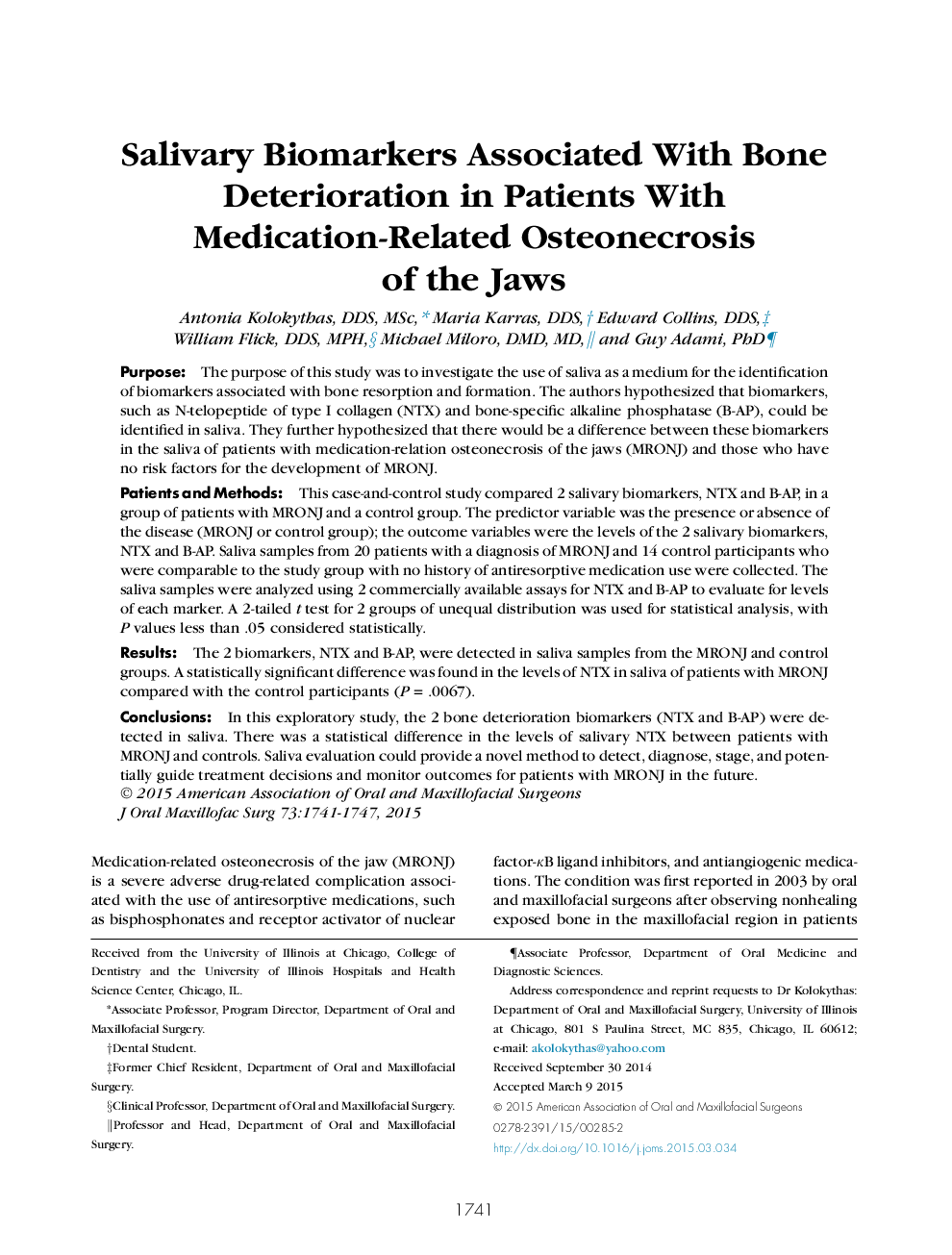| Article ID | Journal | Published Year | Pages | File Type |
|---|---|---|---|---|
| 3152265 | Journal of Oral and Maxillofacial Surgery | 2015 | 7 Pages |
PurposeThe purpose of this study was to investigate the use of saliva as a medium for the identification of biomarkers associated with bone resorption and formation. The authors hypothesized that biomarkers, such as N-telopeptide of type I collagen (NTX) and bone-specific alkaline phosphatase (B-AP), could be identified in saliva. They further hypothesized that there would be a difference between these biomarkers in the saliva of patients with medication-relation osteonecrosis of the jaws (MRONJ) and those who have no risk factors for the development of MRONJ.Patients and MethodsThis case-and-control study compared 2 salivary biomarkers, NTX and B-AP, in a group of patients with MRONJ and a control group. The predictor variable was the presence or absence of the disease (MRONJ or control group); the outcome variables were the levels of the 2 salivary biomarkers, NTX and B-AP. Saliva samples from 20 patients with a diagnosis of MRONJ and 14 control participants who were comparable to the study group with no history of antiresorptive medication use were collected. The saliva samples were analyzed using 2 commercially available assays for NTX and B-AP to evaluate for levels of each marker. A 2-tailed t test for 2 groups of unequal distribution was used for statistical analysis, with P values less than .05 considered statistically.ResultsThe 2 biomarkers, NTX and B-AP, were detected in saliva samples from the MRONJ and control groups. A statistically significant difference was found in the levels of NTX in saliva of patients with MRONJ compared with the control participants (P = .0067).ConclusionsIn this exploratory study, the 2 bone deterioration biomarkers (NTX and B-AP) were detected in saliva. There was a statistical difference in the levels of salivary NTX between patients with MRONJ and controls. Saliva evaluation could provide a novel method to detect, diagnose, stage, and potentially guide treatment decisions and monitor outcomes for patients with MRONJ in the future.
